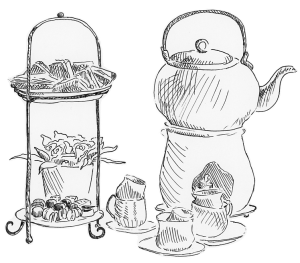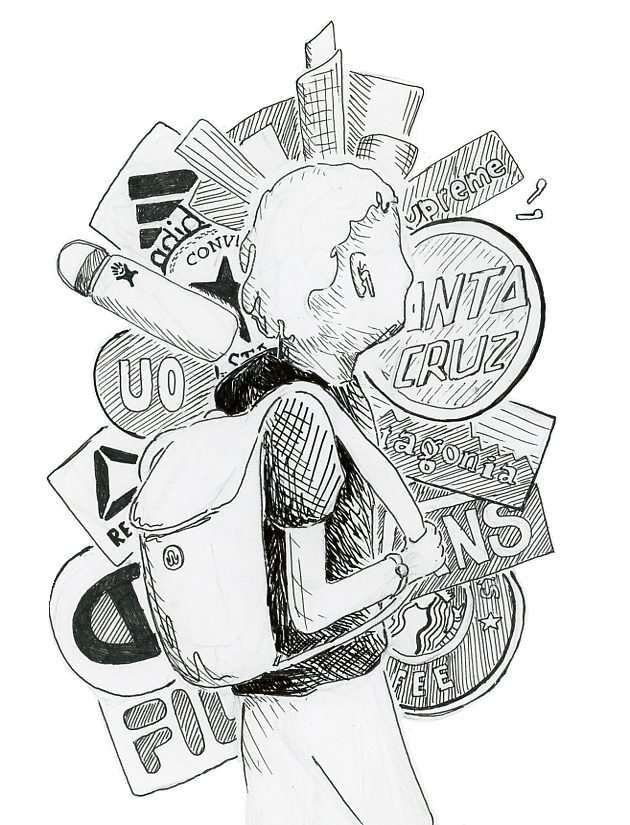There exists an excessive cost to be “average” in Palo Alto. Nowadays, the standards dictated by our social environment have created an unhealthy mindset that pressures us to spend more money. The urge to stay up to date on the latest trends has undermined the joy associated with taking part in pursuits and buying things. Though the pressure to indulge in lavish experiences and the pressure to purchase popular goods may seem different from one another, both stem from the same damaging mentality of buying others’ approval and ignoring one’s desires in the process. In this article, both sides of the spending-culture argument will be explored: the emergence of the experience economy and materialism.
Experience economy: Devaluing experiences with money
Text by Allison Chang
A tea bag, sugar, and boiling water. When I brew green tea at home, it costs me around 30 cents per cup. When I order the same green tea at a nearby restaurant, I pay $3.20 per cup — approximately eleven times more. However, if I were to drink afternoon tea, say, at the English Tea Room in central London, I would be paying €37 ($41) per cup of tea, nearly 130 times the price of homemade tea. At that point, I am no longer paying for the tea — I am buying into the experience of afternoon tea at the finest hotel in the heart of the UK.
The inflated tea prices presented here are byproducts of the emerging “experience economy” geared toward the upper-middle class. Coined by authors B.J. Pine and J.H. Gilmore, the experience economy is the shift from purchasing goods and services to paying for experiences. Seen in the growing popularity of music festivals to the demand of Michelin restaurants to the rise of Instagram museums on social media feeds, the Instagram “staged” experience perpetuates the mentality of buying approval.
Although entertaining and adventurous, people are buying into these experiences for the wrong reasons. I have seen people attend concerts and end up watching the entire program through their phone screens in order to record and share later. People are prioritizing iconic photoshoot destinations merely for photos instead of immersing themselves in the culture of these locations. The need to capture a once-in-a-lifetime experience for social media has created tourist destinations where people spend more time looking at their camera than actually sightseeing.
The need to capture a once-in-a-lifetime experience has created tourist destinations where people spend more time looking at their camera than actually sightseeing.
Los Alto High School senior Chloe Bowen states this sentiment from her summer trip to Chicago.
“I have seen a lot of people’s photos of the glass ledge at Skydeck,” Bowen said. “I thought a photo of the Chicago Skyline would be really cool, so I decided to go. Overall, it was really underwhelming experience. If not for the photos, I don’t remember much.”
Buying these experiences for social media will not buy people satisfaction. These paid experiences can be real, authentic experiences if we choose to attend events that most resonate with us. So, instead of paying €37 for an Instagram worthy cup of tea at the English Tea Room, choose that filling three course meal for your stomach and not your camera.
Materialism: A bubble of expensive items
Text by Naomi Boneh
Walking through Palo Alto High School, it isn’t difficult to notice many students displaying the exact same items. Many are walking with airpods in their ears, carrying Hydroflasks and sporting fancy clothing brands. But what’s wrong with this picture is not just that everyone is the same, but that the items they possess — items that appear as standard as a binder or pencil at school — are unreasonably expensive.
This culture at Paly that involves the majority of students owning expensive things, making them staple items and encouraging materialism among students, pressures more students into feeling that they require something they may not have initially desired. Worse, the school life of students whose parents can’t afford to buy them everything they need may be more stressful than necessary. For many, the price of being average is simply too high, and as a result they face a constant, overwhelming feeling of discontent.
“It [having airpods] was the norm. And it made me feel like it was weird to listen to music during passing periods or lunch or after school if I didn’t have airpods. … More and more of my friends were getting them and soon enough, it was just me and one other person in my friend group that still didn’t have them,” junior Megan Wong says. “I finally got airpods, maybe like a few weeks ago, just really late to the trend. And it was at that time that I realized how much trends have influenced me as a person.”
It’s understandable that students just want to be able to fit in at their school, and buying things that everyone else has can help them foster a sense of community, albeit temporarily. But at what cost? And the issue of common yet expensive goods isn’t just about the money; it concerns a fundamental part of developing as a teenager. High school — and growing up — should be about celebrating differences in interests, not encouraging students’ purchases to be identical.
High school should be about celebrating differences in interests, not encouraging students’ purchases to be identical.
To end the harmful effects that this culture of pricey staple items brings, we as students can consider cheaper alternatives as well as shop more at thrift stores and local businesses, allowing us to become more eco-friendly, improve our local economy and have more possessions unique to ourselves.
When our belongings are no longer tied to popular brands, which are in turn tied to marketing schemes and trends on social media that attempt to manage our lives, we will be able to concentrate on buying things for ourselves instead of due to peer pressure. Walking through Paly campus, one will further appreciate each individual’s expression through their belongings, rather than blandly noting that every student owns a Hydroflask.
Related Stories
The calculating consumer: Exploring the minds of Palo Alto buyers
Feminist fashion: Put your money where your clothes are





